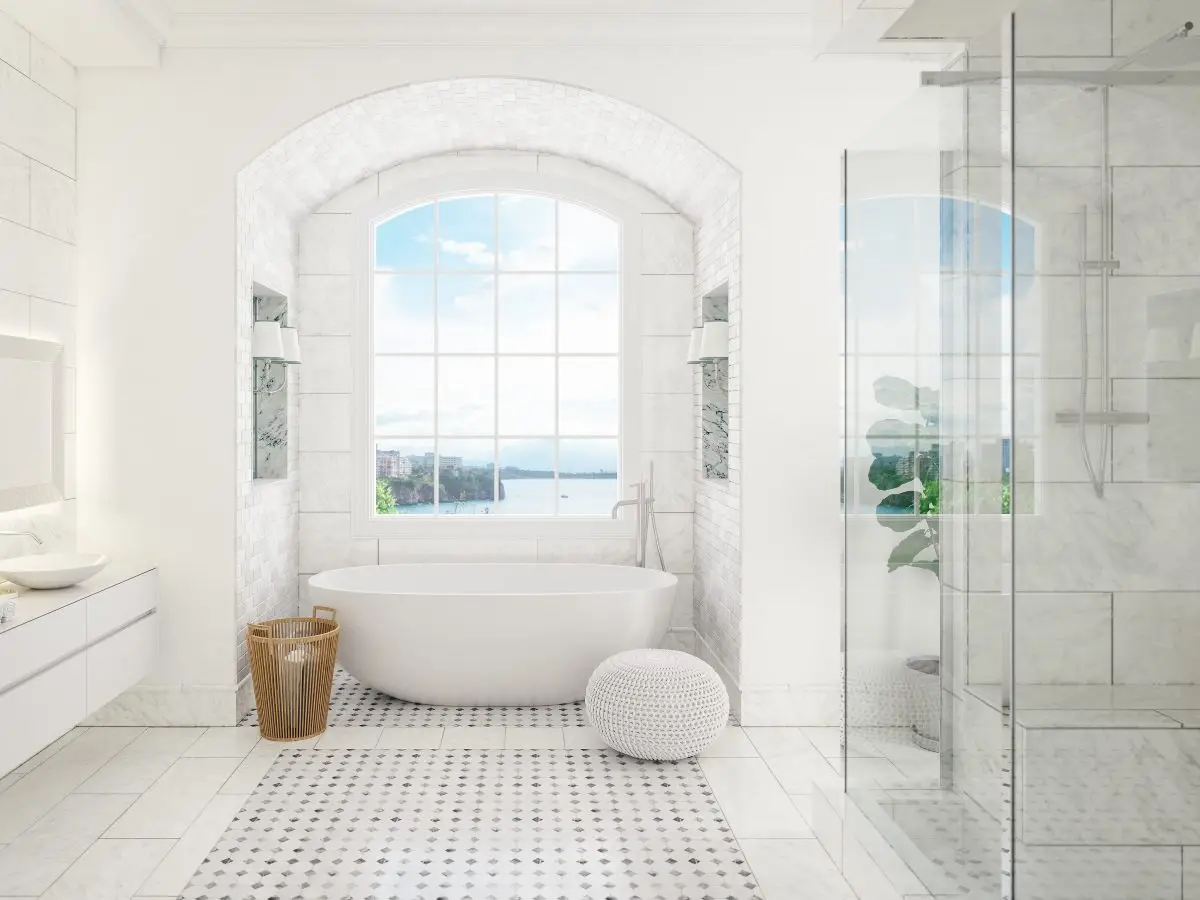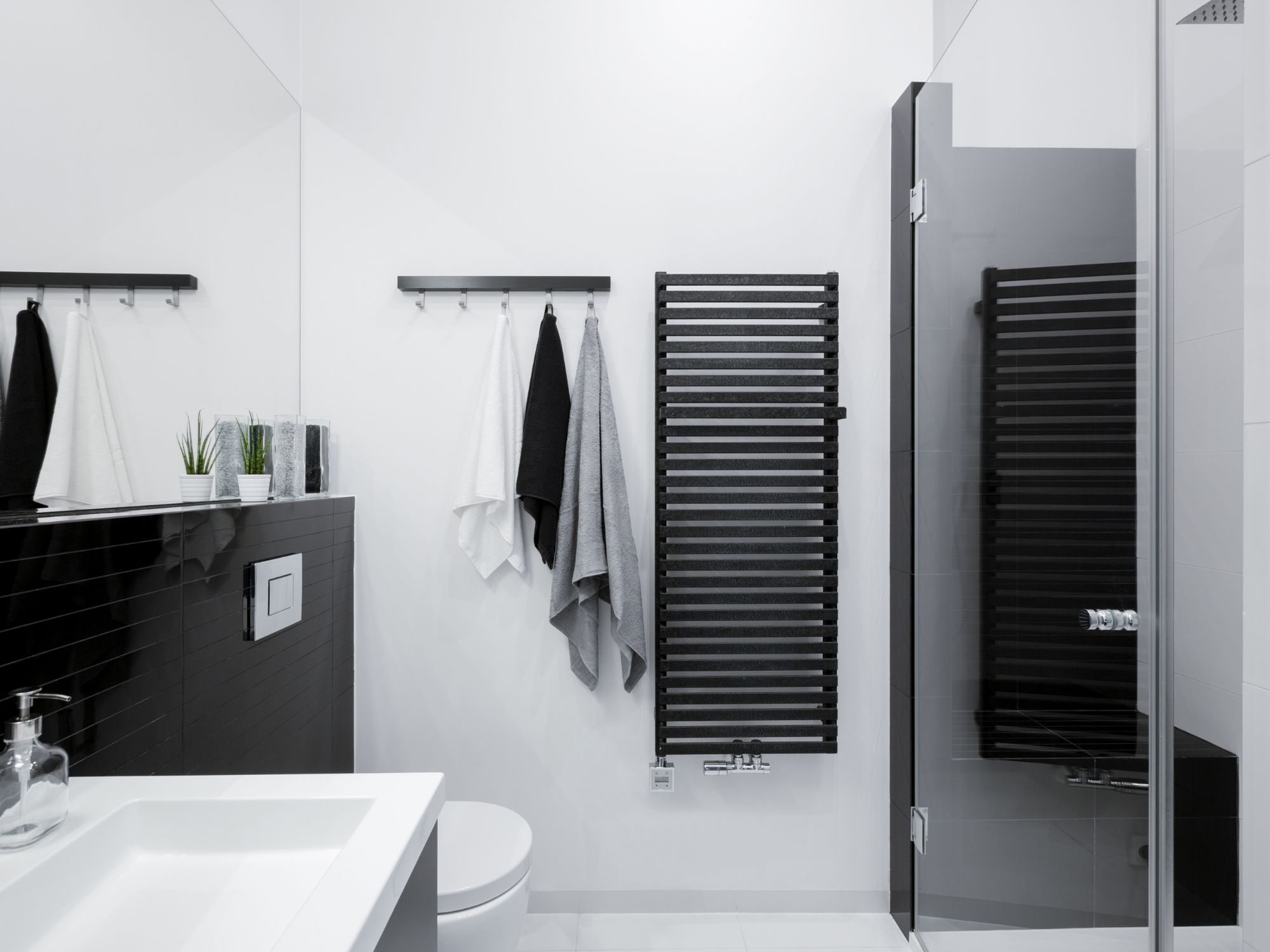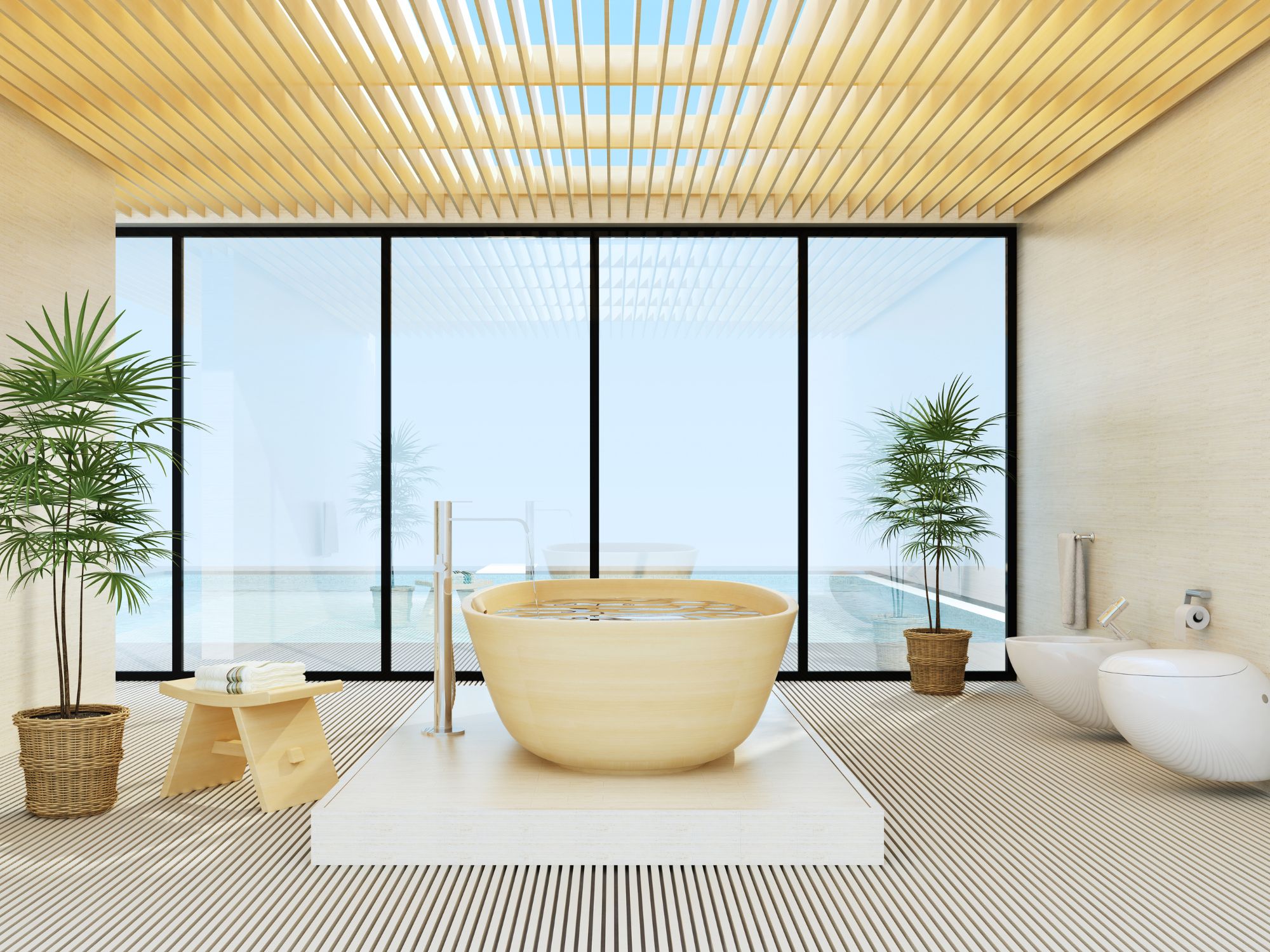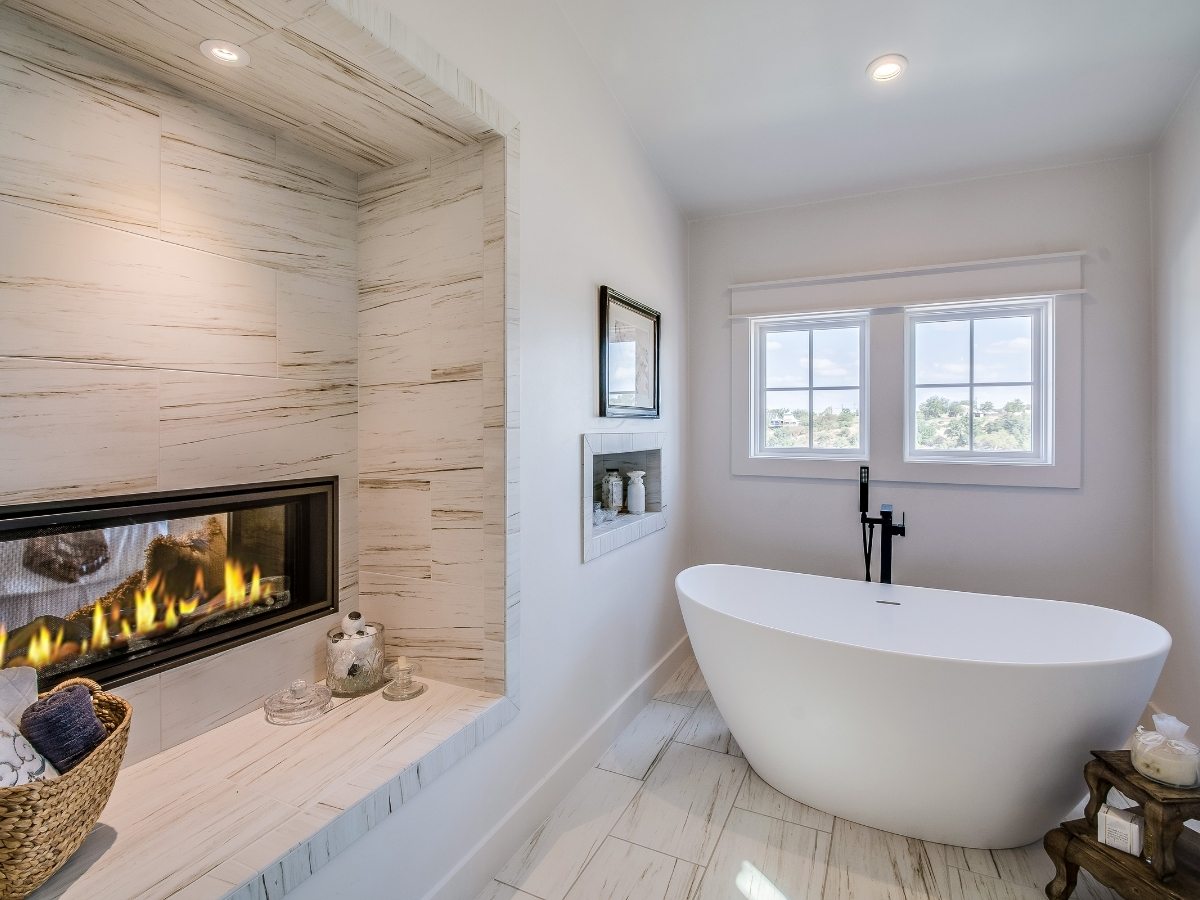This post may contain affiliate links which means I may receive a commission for purchases made through links at no cost to you. I only recommend products that I have personally used or curated specifically after reviewing and ensuring its quality! Learn more on my Private Policy page.
1. Freestanding BathTub Faucet
Freestanding bathtub faucets serve as the cornerstone of modern bathroom design, offering both functionality and aesthetic appeal. Unlike traditional built-in tubs, freestanding bathtubs require standalone faucet fixtures, making the selection of the right faucet a critical decision in the design process.
Freestanding bathtub faucets serve as the cornerstone of modern bathroom design, offering both functionality and aesthetic appeal.
Unlike traditional built-in tubs, freestanding bathtubs require standalone faucet fixtures, making the selection of the right faucet a critical decision in the design process.

Brief Overview of Freestanding Bathtub Faucet
Freestanding tub faucets are distinct from their traditional counterparts in that they are not affixed to the bathtub itself or the surrounding walls. Instead, these faucets stand independently on the floor or are mounted on the wall, allowing for greater flexibility in design and placement.
With sleek and contemporary designs, freestanding bathtub faucets can elevate the visual appeal of any bathroom space, transforming it into a luxurious sanctuary.
Importance of Choosing the Right Faucet for a Freestanding Bathtub
Selecting the appropriate faucet for a freestanding bathtub is paramount for several reasons. Firstly, the faucet serves as a focal point in the bathroom, contributing significantly to the overall aesthetic and ambiance. Secondly, functionality and ease of use are essential considerations to ensure a comfortable bathing experience.
Additionally, compatibility with the tub’s design and layout, as well as adherence to plumbing and construction requirements, are crucial factors that cannot be overlooked. Therefore, the right choice of faucet can greatly enhance both the visual appeal and functionality of the bathroom space.
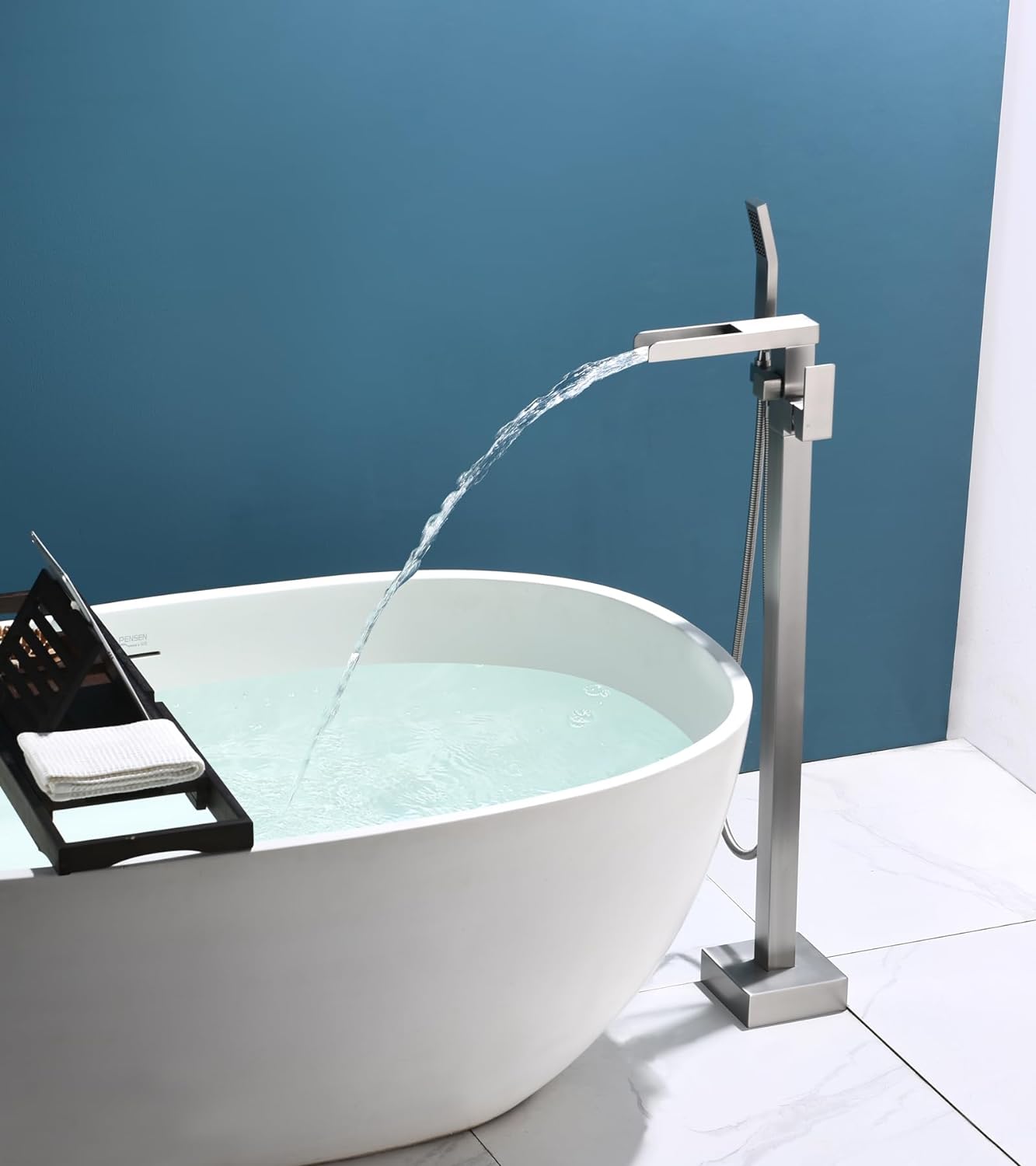
2. Purpose of the Article
The purpose of this article is to provide an in-depth review of different faucet options available for freestanding bathtubs. We will explore both floor-mounted and wall-mounted choices, delving into their respective pros and cons, installation requirements, cost implications, and construction considerations.
By offering comprehensive insights into these faucet options, readers will be empowered to make informed decisions that align with their preferences, budget, and bathroom design goals.
Whether you’re embarking on a bathroom renovation or building a new home, understanding the nuances of freestanding tub faucets is essential for creating a space that seamlessly blends style and functionality.
3. Types of Freestanding BathTub Faucet
Floor-Mounted Bathtub Faucet – Description and Design Features
Floor-mounted faucets are fixtures that stand independently on the floor beside the freestanding bathtub. These faucets typically feature a tall, elegant spout that gracefully arches over the tub, often accompanied by a single or dual handles for controlling water flow and temperature.
They are available in various styles, ranging from sleek and contemporary to more traditional and ornate designs, allowing homeowners to find an option that complements their bathroom decor seamlessly.
Additionally, floor-mounted faucets may incorporate hand showers or diverter valves for added functionality and convenience.
Pros:
Dramatic visual impact: Floor-mounted tub faucets create a striking focal point in the bathroom, adding an element of luxury and sophistication to the space.
Flexible placement: Since they are not attached to the bathtub or walls, floor-mounted tub faucets offer greater flexibility in placement, allowing for creative design configurations.
Easy installation: Installation of floor-mounted tub faucets typically requires minimal disruption to existing plumbing systems, making them a practical choice for bathroom renovations or new constructions.
Cons:
Floor space requirement: Floor-mounted faucets occupy floor space next to the bathtub, which may not be suitable for smaller bathrooms with limited space.
Cleaning challenges: Dust and debris may accumulate around the base of the faucet, requiring regular cleaning to maintain the aesthetics of the bathroom.
Potential for water splashing: Depending on the design and water pressure, floor-mounted faucets may result in water splashing outside the bathtub, requiring careful adjustment during use.
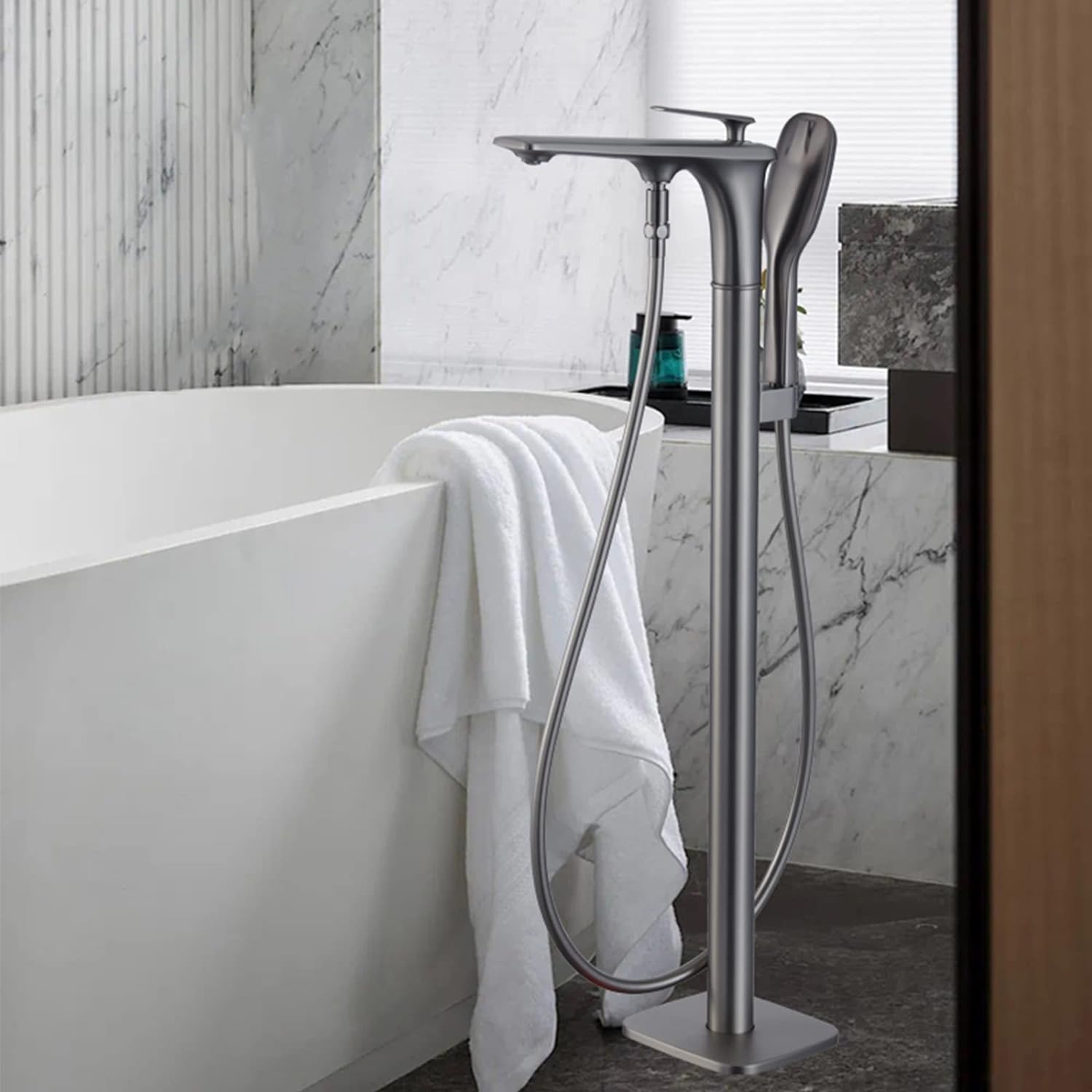
Wall-Mounted Bathtub Faucet – Description and Design Features
Wall-mounted faucets are fixtures that are installed directly onto the wall behind the freestanding bathtub. These faucets typically feature a sleek and streamlined design, with a horizontal spout protruding from the wall and minimalist handles or controls for water flow and temperature adjustment.
Wall-mounted faucets offer a contemporary and space-saving solution for modern bathrooms, contributing to a clean and uncluttered aesthetic.
Pros and Cons
Pros:
Space-saving design: Wall-mounted faucets eliminate the need for floor space beside the bathtub, making them an ideal choice for smaller bathrooms or bathrooms with unconventional layouts.
Easy cleaning: Since they are mounted on the wall, these faucets are easier to clean and maintain compared to floor-mounted options, as there are no exposed surfaces to collect dust or debris.
Versatile design options: Wall-mounted faucets are available in a wide range of styles and finishes, allowing homeowners to achieve a customized look that complements their bathroom decor.
Cons:
Plumbing considerations: Installation of wall-mounted faucets may require adjustments to existing plumbing systems, including proper placement of water supply lines within the wall.
Limited flexibility: Unlike floor-mounted faucets, wall-mounted options are fixed in place, limiting flexibility in design configuration and placement.
Higher installation costs: Depending on the complexity of the installation and the need for additional plumbing work, wall-mounted faucets may incur higher installation costs compared to floor-mounted options.
4. Factors to Consider When Choosing a Freestanding Bathtub Faucet
Selecting the right freestanding tub faucet involves careful consideration of various factors to ensure both functionality and aesthetic harmony within the bathroom space.
Aesthetic Preferences
When choosing a freestanding tub faucet, aesthetic preferences play a significant role in determining the overall look and feel of the bathroom. Consider the design style of the faucet, whether it’s modern, traditional, or transitional, and how it complements the existing decor elements in the bathroom.
Additionally, pay attention to details such as the finish of the tub faucet, whether it’s chrome, brushed nickel, brass, or matte black, as this can significantly impact the overall aesthetic appeal of the space.
Selecting a faucet that aligns with your aesthetic preferences ensures a cohesive and visually pleasing bathroom design.
Space and Layout Considerations
Space and layout considerations are crucial when choosing a freestanding tub faucet, particularly in smaller bathrooms or bathrooms with limited floor space. Evaluate the available space beside the bathtub to determine whether a floor-mounted or wall-mounted faucet would be more suitable. Floor-mounted faucets require adequate floor space beside the tub for installation, while wall-mounted faucets offer a space-saving solution by eliminating the need for floor space.
Additionally, consider the layout of existing plumbing lines and fixtures to ensure compatibility with the chosen faucet style and placement.
Plumbing and Installation Requirements
Plumbing and installation requirements are essential considerations that can influence the selection of a freestanding tub faucet. Evaluate the existing plumbing infrastructure to determine whether it can accommodate the chosen faucet style and placement. Floor-mounted faucets may require access to the floor for proper installation of water supply lines,
while wall-mounted faucets may necessitate adjustments to existing plumbing lines within the wall. Additionally, consider the complexity of installation and any additional construction work that may be required, such as reinforcing the floor or wall to support the weight of the faucet.
Consulting with a professional plumber or contractor can help ensure that the chosen faucet can be installed properly and efficiently.
Budget Constraints
Budget constraints are another important factor to consider when choosing a faucet for freestanding tubs. Set a budget for the faucet and installation costs and explore options within that price range. Floor-mounted faucets may vary in price depending on factors such as design, materials, and brand, with some options being more affordable than others.
Similarly, wall-mounted faucets may have varying price points based on design complexity and installation requirements.
Keep in mind that while higher-priced faucets may offer premium features and finishes, there are also budget-friendly options available that provide excellent quality and functionality.
Construction Implications
Lastly, consider the construction implications of installing a faucet for freestanding tubs. Evaluate the structural integrity of the floor or wall where the faucet will be installed to ensure it can support the weight and pressure of the fixture. Floor-mounted faucets may require additional reinforcement of the floor to prevent sagging or instability, while wall-mounted faucets may require proper anchoring to ensure stability and durability.
Additionally, consider any potential aesthetic or functional changes to the bathroom space resulting from the installation of the faucet, such as alterations to tilework or cabinetry.
Taking construction implications into account ensures a smooth and successful installation process with minimal disruption to the overall bathroom design.

5. Installation Requirements
Proper installation of freestanding tub faucets is crucial to ensure functionality, stability, and longevity. Whether opting for floor-mounted or wall-mounted faucets, several key considerations must be taken into account to achieve a successful installation.
Floor-Mounted Bathtub Faucet – Plumbing Considerations
Installing a floor-mounted faucet requires careful attention to plumbing considerations to ensure optimal performance and functionality. Before installation, assess the existing plumbing layout to determine the location of water supply lines and drains relative to the desired placement of the faucet.
It may be necessary to adjust or extend water supply lines to reach the desired location of the faucet, especially if it is situated far from existing plumbing fixtures.
Additionally, consider the type of floor construction and the method of anchoring the faucet to the floor. Floor-mounted faucets typically require access to the floor for proper installation of water supply lines and mounting hardware.
Depending on the flooring material, such as tile, hardwood, or concrete, installation may involve drilling holes for plumbing access and securing the faucet in place with appropriate anchors or mounting brackets.
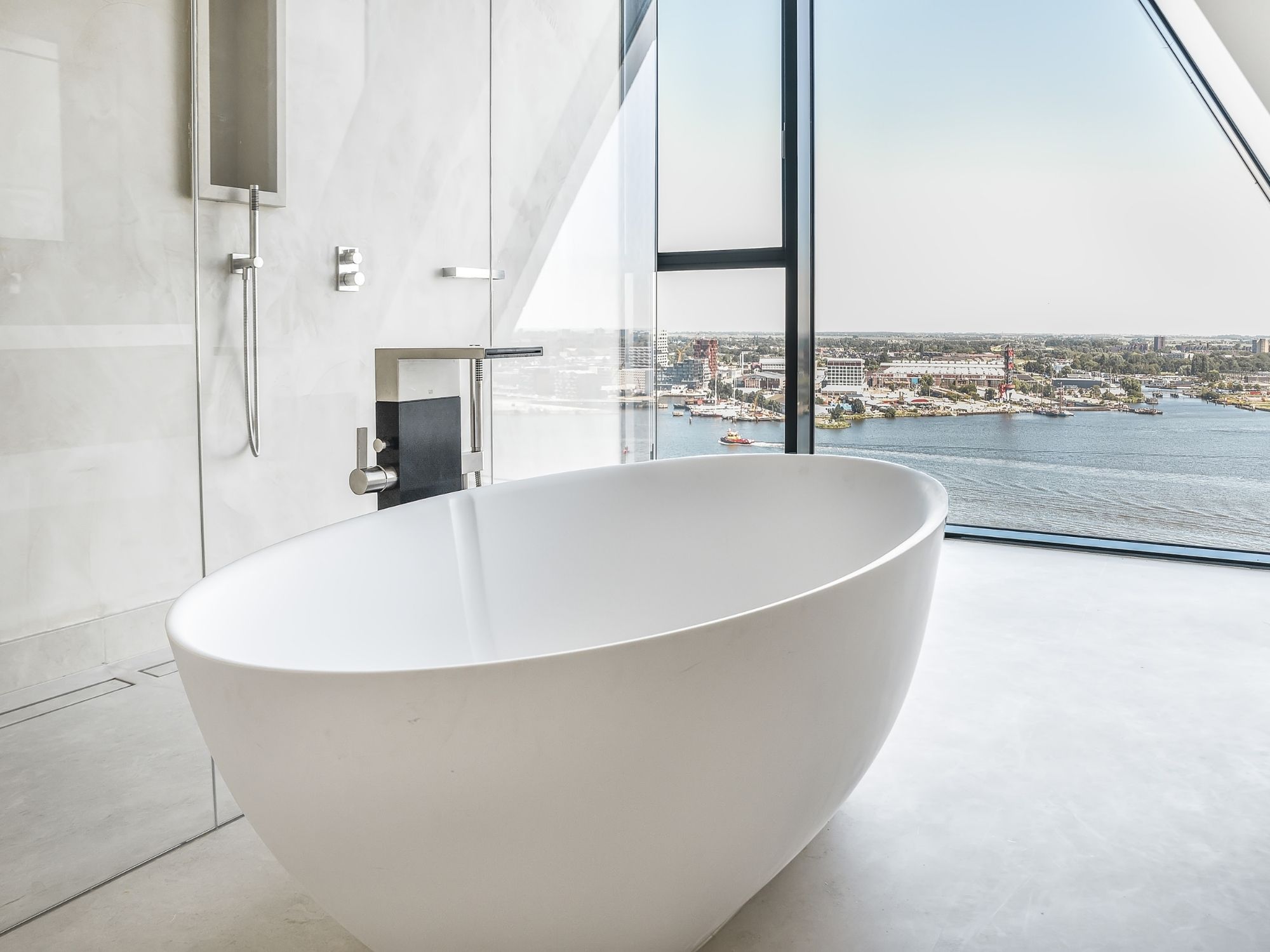
Floor Reinforcement Requirements For Free Standing Tub Faucet
Floor-mounted faucets exert considerable weight and pressure on the floor, particularly when in use. To ensure stability and prevent damage to the flooring material, it may be necessary to reinforce the floor beneath the faucet.
Reinforcement methods vary depending on the type of flooring and structural considerations but may include adding additional support beams or joists beneath the faucet location or using specialized floor reinforcement plates or brackets.
Consulting with a professional plumber or contractor is recommended to assess the specific plumbing and floor reinforcement requirements for installing a floor-mounted faucet.
Proper planning and execution are essential to avoid potential plumbing issues or structural damage during installation.
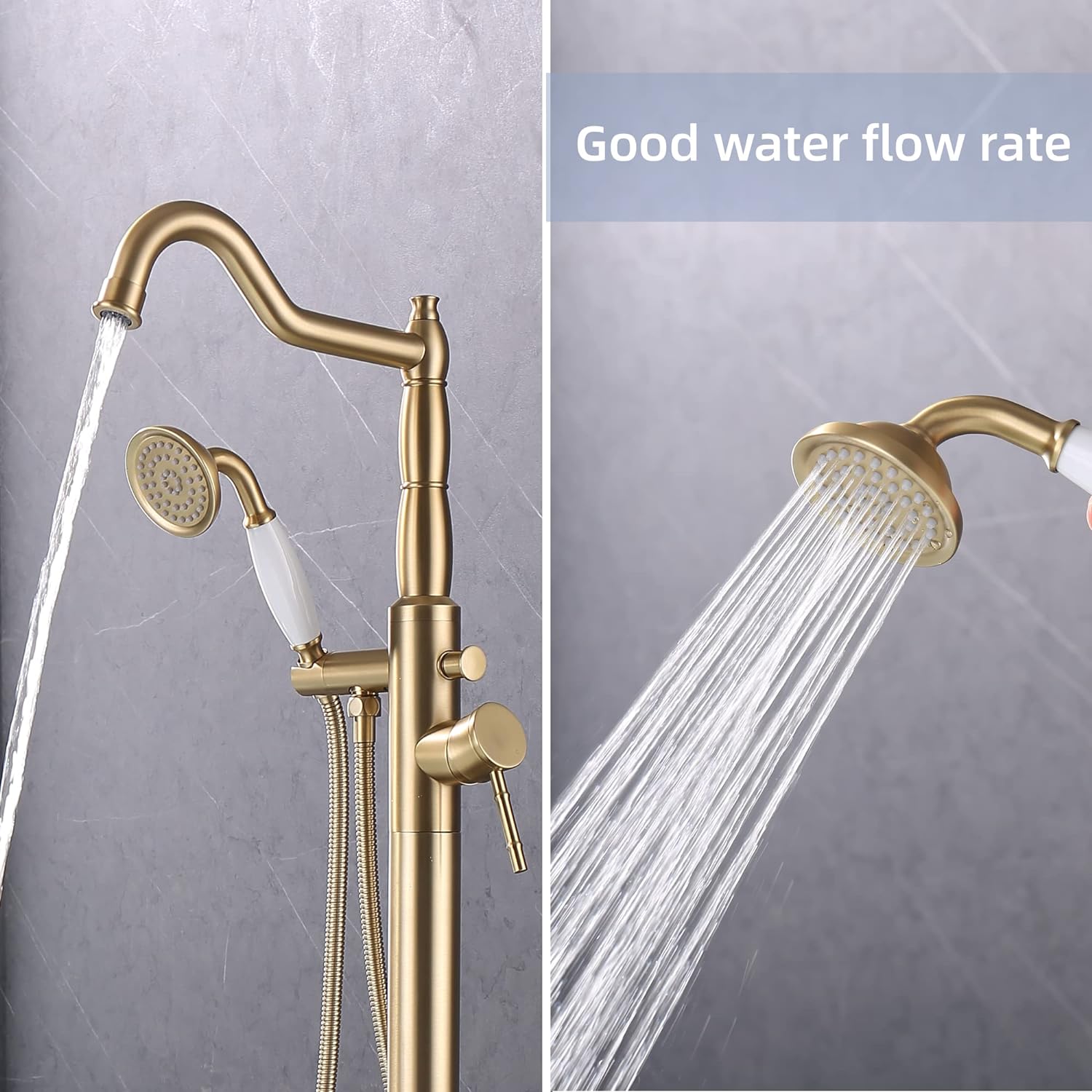
Wall-Mounted Tub Faucet – Plumbing Considerations
Wall-mounted faucets offer a space-saving solution for freestanding tubs but require careful consideration of plumbing requirements to ensure proper installation. Before installation, evaluate the existing plumbing infrastructure to determine the feasibility of mounting the faucet on the wall behind the bathtub.
Plumbing considerations may include locating and accessing water supply lines within the wall, ensuring proper alignment with the faucet’s inlet connections, and providing adequate drainage for the tub. Depending on the location of existing plumbing fixtures and the desired placement of the faucet, it may be necessary to reroute or extend water supply lines and drains to accommodate the new installation.
Professional expertise may be required to assess plumbing requirements accurately and execute the installation of a wall-mounted faucet with precision and efficiency.
Wall Reinforcement Requirements
In addition to plumbing considerations, wall-mounted faucets may require reinforcement of the wall structure to ensure stability and support. Unlike floor-mounted faucets, which rely on the floor for anchoring, wall-mounted faucets depend on the strength and integrity of the wall to bear the weight of the fixture.
Depending on the type of wall construction, such as drywall, plaster, or tile, reinforcement methods may vary. Common reinforcement techniques include installing support brackets or blocking within the wall cavity to provide additional stability and prevent sagging or movement of the faucet over time.
Consulting with a professional contractor or structural engineer is recommended to assess the structural integrity of the wall and determine the appropriate reinforcement requirements for installing a wall-mounted faucet. Proper installation is essential to ensure the safety and longevity of the fixture and prevent potential damage to the wall structure.
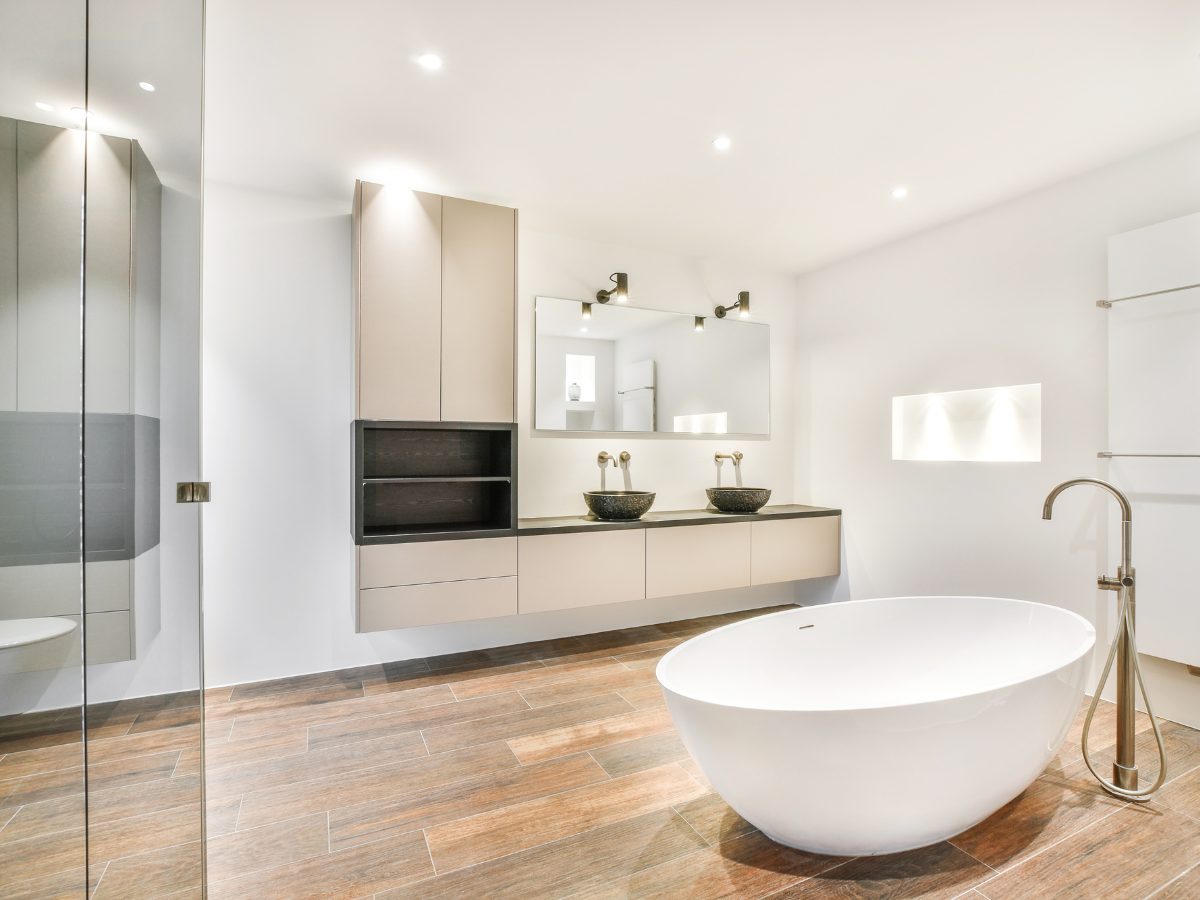
6. Cost Implications
When considering freestanding tub faucets, it’s essential to factor in both the initial investment and long-term maintenance and repair costs. Understanding these cost implications can help homeowners make informed decisions that align with their budgetary constraints and long-term financial goals.
Initial Investment – Cost of Bathtub Faucet
The cost of the faucet itself is a significant component of the initial investment. Floor-mounted and wall-mounted faucets come in a wide range of price points, depending on factors such as brand, materials, design complexity, and finish. High-end faucets crafted from premium materials such as solid brass or stainless steel may command a higher price tag due to their durability, aesthetic appeal, and longevity.
On the other hand, budget-friendly options made from lesser-quality materials or with simpler designs may offer a more affordable alternative for homeowners on a tight budget.
When budgeting for a freestanding tub faucet, consider not only the upfront cost of the fixture but also the overall value it provides in terms of quality, durability, and aesthetic enhancement. Investing in a high-quality faucet from a reputable manufacturer can pay off in the long run by minimizing the need for costly repairs or replacements down the line.
Installation Costs
In addition to the cost of the faucet itself, homeowners must budget for installation costs, which can vary depending on factors such as the complexity of the installation, labor rates, and any additional plumbing or construction work required. Floor-mounted faucets may involve less invasive installation compared to wall-mounted options, potentially reducing labor costs. However, factors such as the need for floor reinforcement or adjustments to existing plumbing lines can impact overall installation expenses.
Obtaining quotes from professional plumbers or contractors can help homeowners estimate installation costs accurately and budget accordingly. While it may be tempting to cut costs by attempting a DIY installation, hiring a qualified professional ensures proper installation and minimizes the risk of costly mistakes or damage to the plumbing system or bathroom infrastructure.
Long-Term Maintenance and Repair Costs
In addition to the initial investment, homeowners should consider the long-term maintenance and repair costs associated with freestanding tub faucets. Proper maintenance, including regular cleaning and inspection, is essential to preserve the appearance and functionality of the faucet over time.
Budget for potential expenses such as replacement parts, repairs, or professional maintenance services to address issues such as leaks, corrosion, or wear and tear.
Choosing a high-quality faucet from a reputable manufacturer can help minimize long-term maintenance and repair costs by reducing the likelihood of premature failure or malfunction. Additionally, selecting a faucet with a warranty or guarantee provides added peace of mind and financial protection against unforeseen issues or defects.
By carefully considering both the initial investment and long-term cost implications of freestanding tub faucets, homeowners can make informed decisions that balance their budgetary constraints with their desire for quality, durability, and aesthetic appeal.

7. Construction Considerations For Free Standing Tub Faucet
When installing freestanding tub faucets, various construction considerations must be taken into account to ensure compatibility, stability, and aesthetic harmony within the bathroom space. Evaluating factors such as flooring materials, wall structure, and overall bathroom design and layout is essential to achieve a successful and visually appealing installation.
Flooring Materials and Compatibility with Floor-Mounted Bathtub Faucet
Floor-mounted faucets require solid and stable flooring to support the weight of the fixture and provide a secure anchoring point. Different flooring materials, such as tile, hardwood, vinyl, or concrete, offer varying levels of compatibility with floor-mounted faucets.
For tile or concrete floors, installation of floor-mounted faucets typically involves drilling holes for plumbing access and securing the faucet in place with appropriate anchors or mounting brackets. It’s essential to ensure that the flooring material is thick enough and structurally sound to withstand the weight and pressure exerted by the faucet without cracking or shifting.
Hardwood or vinyl floors may require additional reinforcement to support the weight of the faucet and prevent damage to the flooring material over time. Reinforcement methods may include adding support beams or joists beneath the faucet location or using specialized floor reinforcement plates or brackets.
Before installing a floor-mounted faucet, carefully assess the compatibility of the chosen flooring material with the installation requirements of the faucet. Consulting with a professional contractor or installer can help determine the best approach for ensuring a stable and secure installation.
Wall Structure and Compatibility with Wall-Mounted Bathtub Faucet
Wall-mounted faucets rely on the structural integrity of the wall to support the weight of the fixture and provide stability during use. It’s essential to evaluate the wall structure and ensure compatibility with the chosen faucet style and placement.
Drywall or plaster walls may require additional reinforcement to support the weight of a wall-mounted faucet and prevent sagging or damage to the wall over time. Reinforcement methods may include installing support brackets or blocking within the wall cavity to provide added stability and structural support.
Tile walls offer a more durable and stable surface for mounting wall-mounted faucets, but careful attention must be paid to ensure proper alignment and anchoring of the fixture. Specialized mounting hardware may be required to secure the faucet to the tile surface securely.
Before installing a wall-mounted faucet, assess the structural integrity of the wall and consult with a professional contractor or installer to determine the best approach for ensuring a secure and stable installation.
Integration with Existing Bathroom Design and Layout
In addition to structural considerations, integration with existing bathroom design and layout is essential when selecting and installing freestanding tub faucets. The faucet should complement the overall aesthetic of the bathroom space and blend seamlessly with other fixtures and decor elements.
Consider factors such as the style, finish, and design of the faucet, as well as its placement relative to other bathroom fixtures such as the bathtub, sink, and shower. Choose a faucet that harmonizes with the existing design scheme and enhances the visual appeal of the bathroom.
Evaluate the layout of the bathroom to determine the most suitable placement for the faucet, taking into account factors such as accessibility, convenience, and functionality. Ensure that the chosen faucet style and placement align with the overall flow and functionality of the space.
By carefully considering construction considerations such as flooring materials, wall structure, and integration with existing bathroom design and layout, homeowners can ensure a successful and visually appealing installation of freestanding tub faucets that enhances the overall functionality and aesthetics of the bathroom space.
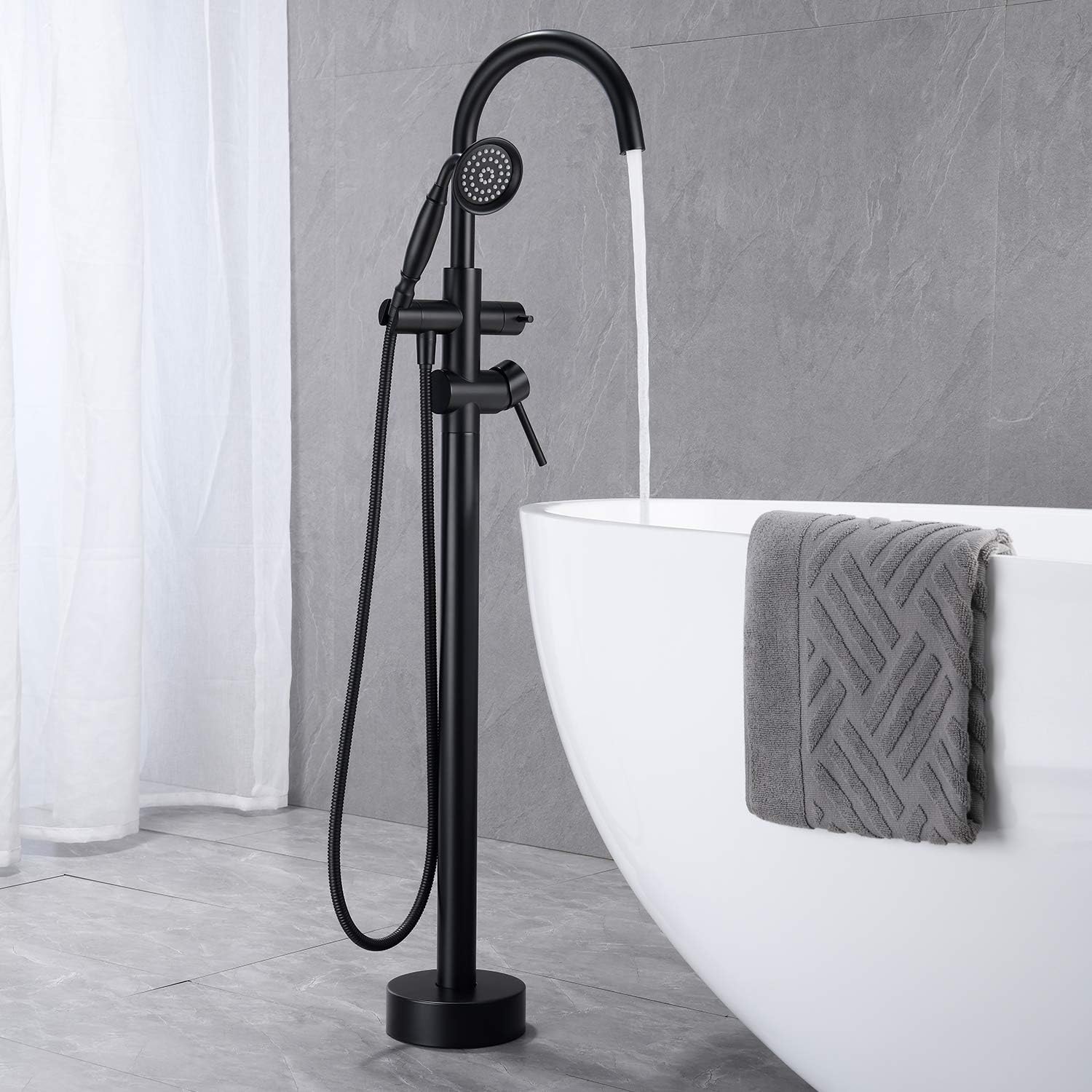
8. Conclusion
As you embark on the journey of selecting a freestanding tub faucet, it’s essential to consider various factors to ensure that your choice aligns with both your practical needs and aesthetic preferences. From floor-mounted to wall-mounted options, each type of faucet offers unique advantages and considerations that can significantly impact the functionality and visual appeal of your bathroom space.
Faucet Options for Freestanding Bathtub
In this article, we have explored the two primary types of freestanding tub faucets: floor-mounted and wall-mounted. Floor-mounted faucets create a dramatic focal point in the bathroom, offering flexibility in placement and design. On the other hand, wall-mounted faucets provide a space-saving solution, ideal for smaller bathrooms or those with unconventional layouts.
By understanding the distinct features and considerations of each type, you can make an informed decision that suits your specific needs and preferences.
Factors To Consider Before Making a Decision
Selecting the right freestanding tub faucet is not a decision to be taken lightly. It requires careful consideration of factors such as aesthetic preferences, space and layout considerations, plumbing and installation requirements, budget constraints, and construction implications.
By evaluating these factors thoughtfully, you can ensure that your chosen faucet seamlessly integrates with your bathroom design and meets your functional requirements.
Weigh Pros and Cons Based on Individual Preferences and Requirements
Throughout this article, we have discussed the pros and cons of floor-mounted and wall-mounted faucets, highlighting their respective advantages and considerations. However, it’s essential to remember that the “right” faucet ultimately depends on your individual preferences, requirements, and priorities.
Take the time to weigh the pros and cons carefully, considering factors such as aesthetics, functionality, budget, and practicality. By prioritizing what matters most to you, you can confidently select a freestanding tub faucet that enhances your bathroom space and meets your unique needs.
9. Final Thoughts
Investing in the right freestanding tub faucet is not just about enhancing the visual appeal of your bathroom; it’s also about creating a functional and enjoyable bathing experience. The faucet serves as a central element in the design of your bathroom, contributing to its overall ambiance and usability.
By choosing a faucet that aligns with your style preferences, fits seamlessly into your space, and meets your practical needs, you can transform your bathroom into a luxurious sanctuary where you can relax and unwind after a long day.
In conclusion, selecting a freestanding tub faucet is a decision that requires careful consideration and attention to detail. By evaluating the different options available, weighing the pros and cons, and prioritizing your preferences and requirements, you can make an informed decision that enhances the functionality and beauty of your bathroom space for years to come.


